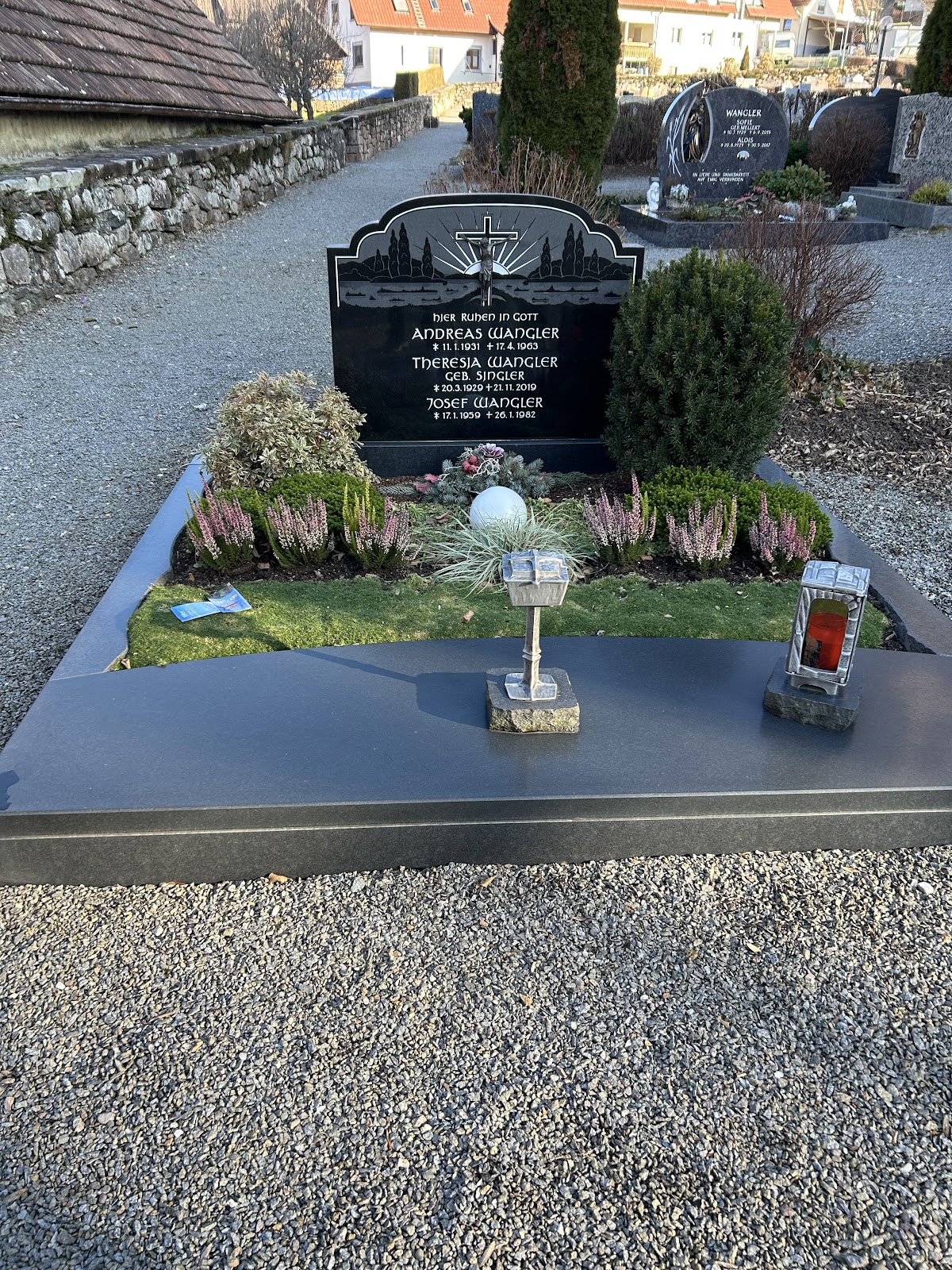From German Girls Genealogy (Teresa Steinkamp McMillin & Debra A. Hoffman):
In my post from a couple of weeks ago, I (Teresa) told you a bit about our trip to Schuttertal-Schweighausen in Baden-Württemberg. We visited the Saubauernhof, a farm that had been in my family. Before we saw the farm, we went to St. Romanus Catholic Church which my family had attended. We also walked through its graveyard.
I knew not to expect to see my ancestors’ names on any of the tombstones there. They had lived and died in the mid-1800s and earlier. If you’re not familiar with burial practices in Germany (and other parts of Europe), I’ll explain. Gravesites are usually leased for a period of time. I was told that gravesites at St. Romanus were leased for fifty years. After that time, the site is reused for more burials. Tombstones are sometimes reused after re-etching them.
I was surprised, however, that my guide could tell me where my ancestors had been buried. Logically, the burial plot was the same for past owners of the Saubauernhof. Leo and Maria Anna Ohnemus, buried there now, are the parents of the current farm owner. My ancestor, Protas Ohnemus, was buried in this very spot when he died in 1865.
These gravesites are immaculately maintained! They have beautiful stones and a little garden in front of the stone with an array of plants. I have visited several graveyards or cemeteries in Germany. My experience with the beauty of the plots has been consistent. I often see at least one person maintaining the grave of a loved one. Surviving family members make sure the grave looks pristine. Watering cans and compost bins are strategically placed throughout the cemetery to assist the gardeners.
I also saw the burial plot for the Wangler family. They currently own the farm where my Meyer ancestors lived. The Wangler plot is where my Meyer ancestors would have been buried.
In a future post, I’ll take you inside St. Romanus Church. There’s a lot of history there!











